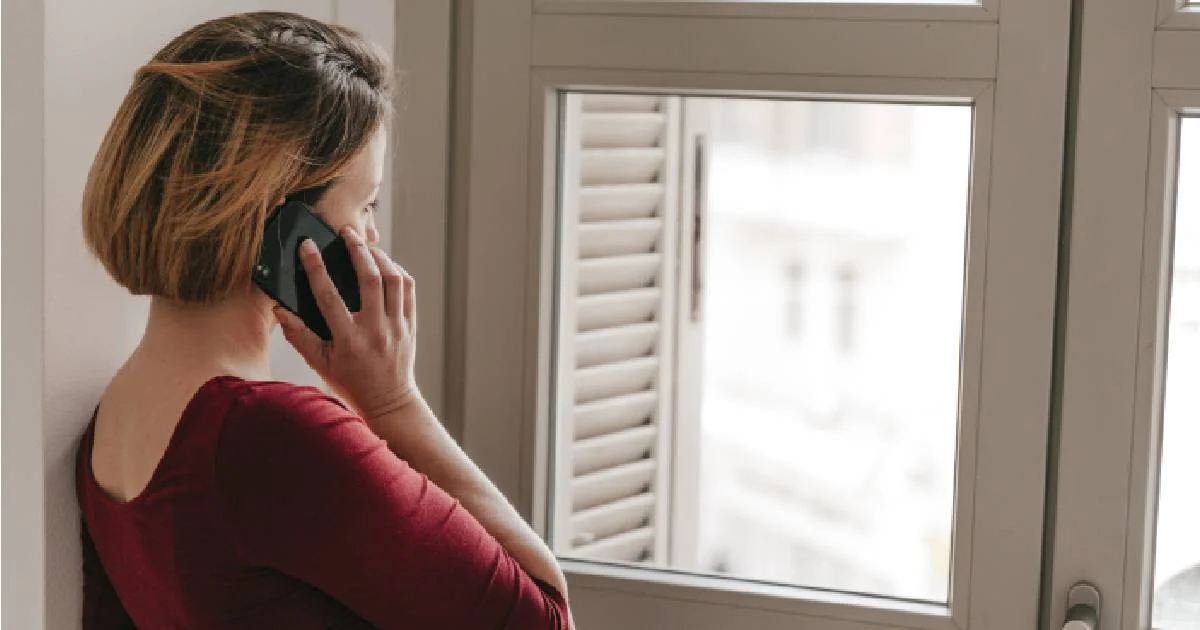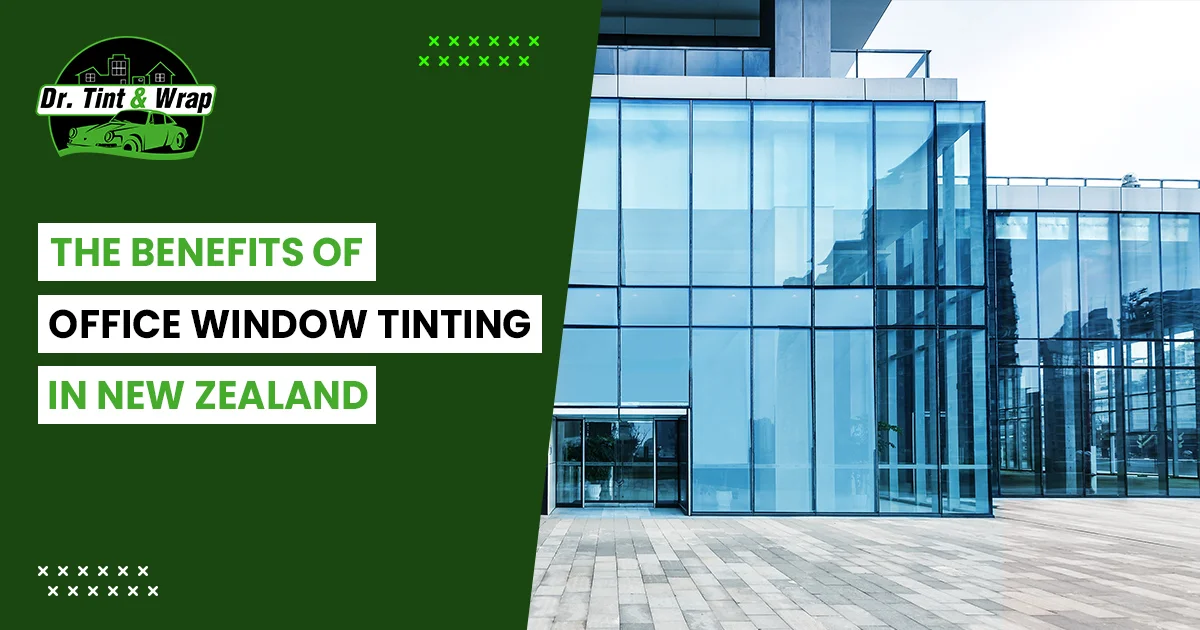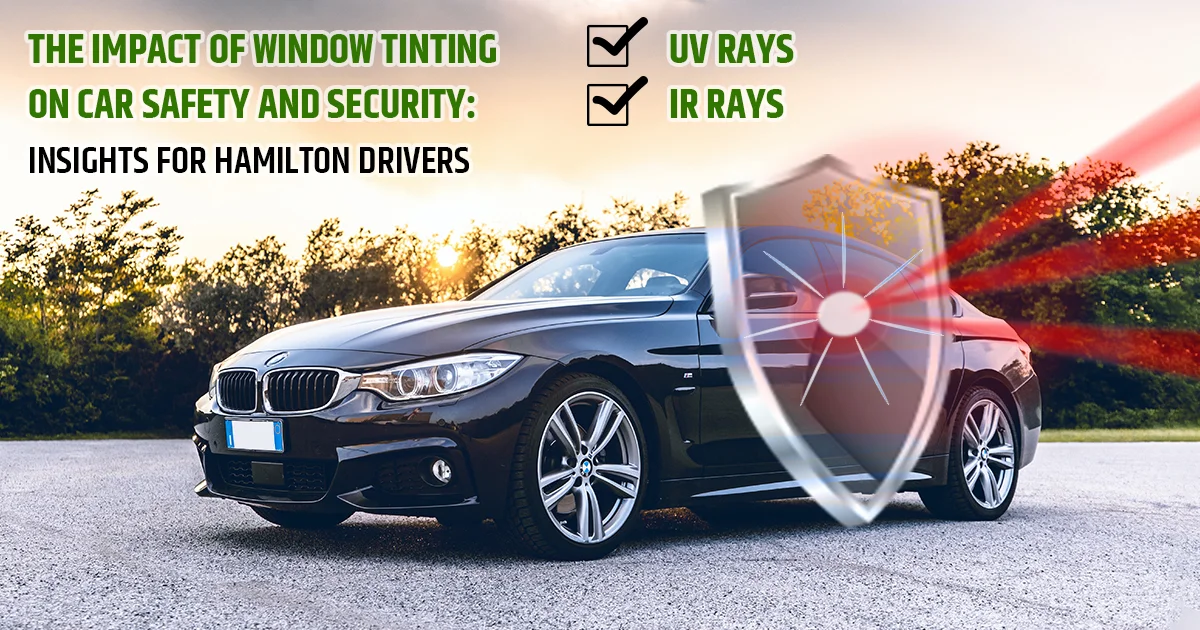
Smart Home Integration: The Future of Window Tinting for 2023
30 Oct 2023, By AdminIn a rapidly advancing world of technology and automation, our homes are becoming smarter by the day. From thermostats that adapt to our preferences to voice-controlled lighting systems, we are witnessing a revolution in the way we interact with our living spaces. Window tinting, once seen as a simple solution for privacy and heat reduction, is also stepping into the future.
The Basics of Home Window Tinting
Before we delve into the future of window tinting, let's start with the basics. Home window tinting involves applying a thin film to the interior or exterior of your windows. These films are designed to reduce the amount of visible light, UV rays, and heat that enters your home. They offer several benefits, including:
- Energy Efficiency: Tinted windows can help regulate indoor temperatures, reducing the need for excessive heating or cooling, thereby saving energy and lowering utility bills.
- Privacy: Tinted windows can provide privacy by preventing outsiders from peering into your home while maintaining your view of the outside.
- UV Protection: Tinted windows block harmful UV rays, protecting your furniture, flooring, and artwork from fading and sun damage.
- Glare Reduction: Tinted windows can significantly reduce glare on screens, making it more comfortable to watch TV or work on a computer.
- Enhanced Security: Some advanced tints can reinforce your windows, making them more resistant to shattering.
Smart Home Integration
The integration of window tinting into the broader ecosystem of smart homes is undoubtedly one of the most exciting developments in the field. Here's how it's evolving in 2023:
- Automated Tint Control: Smart window tinting allows homeowners to control the tint level of their windows with a simple touch of a button or a voice command. Through smartphone apps or smart home systems like Amazon Alexa or Google Home, you can easily adjust the tint to suit your preference, time of day, or specific needs. For example, you can schedule your windows to tint at certain hours to reduce heat and glare during the brightest parts of the day.
- Sunlight Sensing Technology: Many modern window tinting solutions are equipped with sunlight sensors. These sensors can detect the intensity of sunlight and automatically adjust the tint level accordingly. When the sun is at its peak, the tint darkens to block excessive heat and glare. As the day transitions into evening, the tint lightens to allow more natural light into your home.
- Integration with Smart Home Systems: Smart window tinting is now seamlessly integrated with other smart home systems. This means that you can coordinate your window tinting with other smart devices in your home. For instance, if your thermostat detects a rise in temperature, it can trigger your window tinting to darken, helping your HVAC system maintain a comfortable indoor environment more efficiently.
- Voice Commands: Voice-activated controls are becoming increasingly popular in smart homes. Window tinting can now be adjusted with a simple voice command. Imagine saying, "Alexa, tint the living room windows," and watching as your windows respond accordingly. This level of convenience and automation is making life in a smart home even more enjoyable.
- Energy Efficiency: Smart window tinting not only enhances comfort but also contributes to energy savings. By working in conjunction with your smart thermostat, it ensures that your home remains at an optimal temperature. This reduces the load on your heating and cooling systems, ultimately lowering your energy consumption and utility costs.
Conclusion
In 2023, home window tinting has evolved from a simple, passive solution to an integral part of the smart home ecosystem. It not only provides the traditional benefits of privacy, UV protection, and glare reduction but also contributes to energy efficiency and enhances the overall quality of life in your home. With the integration of automation, sunlight sensors, and compatibility with other smart devices, the future of window tinting is undoubtedly bright.
As technology continues to advance, we can expect even more exciting developments in the world of home window tinting. The future is now, and it looks clear, comfortable, and smart, thanks to these innovative solutions that are transforming our living spaces. So, if you haven't considered smart window tinting for your home, it might be time to embrace the future of living comfortably and efficiently.

The Benefits of Office Window Tinting in New Zealand
30 Oct 2023, By AdminWhen it comes to enhancing the comfort and functionality of your home, window tinting is a solution that often goes unnoticed. In New Zealand, where climate variations are common, the benefits of home window tinting extend far beyond aesthetic appeal. In this article, we'll explore how home window tinting can significantly reduce your energy bills and lead to long-term cost savings, making it a smart investment for homeowners across the country.
Understanding the Energy Efficiency of Window Tinting
New Zealand experiences a range of weather conditions throughout the year, from scorching summers to chilly winters. During these extremes, the energy used to regulate indoor temperatures can skyrocket. This is where window tinting comes into play.
1. Heat Reduction: One of the primary benefits of window tinting is its ability to reduce heat gain. Tinted windows block a significant portion of the sun's heat and harmful UV rays from entering your home. As a result, your indoor spaces remain cooler during hot summer months, reducing the need for air conditioning.
2. Insulation: Window tinting also provides insulation benefits, helping to maintain a consistent indoor temperature. In winter, it helps to keep warmth inside, reducing the need for excessive heating.
Cost Savings Through Window Tinting
Now, let's delve into how these energy-efficient qualities translate into tangible cost savings for homeowners in New Zealand.
1. Lower Energy Bills: By reducing heat gain during the summer and heat loss during the winter, window tinting significantly reduces your reliance on heating and cooling systems. As a result, you'll see a noticeable drop in your energy bills year-round.
2. Extended Appliance Lifespan: Reduced reliance on air conditioners and heaters not only saves you money on electricity but also extends the lifespan of these appliances. They don't have to work as hard, which means fewer repairs and replacements.
3. Furniture and Flooring Preservation: Window tinting also blocks harmful UV rays that can cause fading and damage to your furniture, flooring, and décor. This means you won't have to spend as much on replacing or refurbishing these items.
4. Enhanced Home Value: A home with energy-efficient features like window tinting can command a higher resale value in the New
Zealand real estate market. Potential buyers are often willing to pay more for a home with reduced energy costs.
In New Zealand, where energy efficiency and sustainability are becoming increasingly important, home window tinting stands out as a practical investment for homeowners. By reducing energy bills, extending the lifespan of appliances, preserving your interior, and enhancing your home's value, window tinting offers numerous long-term cost-saving benefits.
So, if you're looking to make your New Zealand home more energy-efficient and cost-effective, consider investing in professional window tinting services. Not only will you enjoy a more comfortable living space, but you'll also contribute to a greener and more sustainable future while saving money in the process.

Why Paint Protection Film is the Ultimate Solution for Your Car
30 Oct 2023, By AdminOwning a car is a significant investment, and maintaining its pristine condition is a priority for many car enthusiasts. With various options available for car paint protection, choosing the right one can be challenging. Among these options, Paint Protection Film (PPF) stands out as the best choice. Here’s why Paint Protection Film is the ultimate solution for car paint protection.
- 1.Superior Protection Against Physical Damage:
Paint Protection Film offers unmatched protection against physical damage. It acts as a robust shield against minor abrasions, stone chips, scratches, and other debris that can cause unsightly damage to your car’s paintwork. The film’s durable and flexible nature ensures that the underlying paint remains untouched, preserving the car’s appearance and value. - 2.UV Protection:
Prolonged exposure to ultraviolet (UV) rays can cause your car’s paint to fade and oxidize over time. Paint Protection Film provides an effective barrier against harmful UV rays, preserving the vibrant color and glossy finish of your vehicle. This UV resistance ensures that your car looks newer for longer, even when exposed to harsh sunlight. - 3.Chemical Resistance:
Paint Protection Film is designed to resist a wide range of chemicals that can harm your car’s paint. From bird droppings and bug splatter to acid rain and tree sap, PPF prevents these substances from coming into direct contact with the paint, reducing the risk of staining and etching. This chemical resistance makes it easier to clean your car and maintain its flawless appearance. - 4.Preservation of Original Paint:
Unlike traditional paint protection methods that involve applying additional layers of paint or coatings, the Paint Protection Film preserves the original paint of your car. This is particularly important for vintage or high-end vehicles where maintaining the factory paintwork is crucial for their value. PPF ensures that the original paint remains untouched and in mint condition. - 5.Clear and Invisible Protection:
One of the biggest advantages of Paint Protection Film is its clarity. When applied correctly, PPF is virtually invisible, allowing the original color and finish of your car to shine through without any distortion. This means you can enjoy the benefits of superior protection without compromising on the aesthetic appeal of your vehicle. - 6.Long-Lasting Durability:
Paint Protection Film is designed to last for several years, offering long-term protection for your car. High-quality PPF can endure the rigors of daily driving, harsh weather conditions, and regular washing without deteriorating. This longevity means fewer reapplications and lower maintenance costs over the lifetime of your vehicle. - 7.Ease of Maintenance:
Maintaining a car with Paint Protection Film is straightforward. The film’s smooth surface repels dirt, dust, and grime, making it easier to clean. Regular washing and occasional waxing are usually enough to keep the film and the underlying paint in excellent condition. This ease of maintenance saves time and effort, allowing you to enjoy your car more and worry less about its upkeep. - 8.Customizable and Versatile Application:
Paint Protection Film can be applied to various parts of your vehicle, from the hood and fenders to the mirrors and bumpers. It can be customized to cover specific areas prone to damage or applied to the entire vehicle for comprehensive protection. This versatility ensures that you can tailor the level of protection to suit your needs and preferences. - 9.Enhanced Resale Value:
Finally, using Paint Protection Film can enhance the resale value of your car. A well-maintained exterior free from chips, scratches, and stains is more attractive to potential buyers. The presence of PPF indicates that you have taken diligent care of your vehicle, which can justify a higher asking price and facilitate a quicker sale.
Conclusion
In summary, Paint Protection Film offers an array of benefits that make it the best choice for car paint protection. Its superior defense against physical and chemical damage, self-healing properties, UV protection, and long-lasting durability ensure that your car remains in pristine condition. With its clear and invisible application, ease of maintenance, and customizable coverage, PPF stands out as the ultimate solution for preserving the beauty and value of your vehicle. Investing in Paint Protection Film is a smart decision for any car owner who wants to keep their car looking new for years to come.

The Impact of Window Tinting on Car Safety and Security: Insights for Hamilton Drivers
30 Oct 2023, By AdminWindow tinting has become a popular choice among car owners in Hamilton and for good reason. Beyond its aesthetic appeal, window tinting offers several benefits, including enhanced privacy, protection from harmful UV rays, and improved temperature control inside the vehicle. However, one aspect that is often overlooked is the impact of window tinting on car safety and security. In this blog post, we will delve into the various ways in which window tinting can contribute to a safer and more secure driving experience for Hamilton drivers.
1. Reduced Glare for Enhanced Visibility: Driving in Hamilton, like any other city, can pose challenges with regard to glare from the sun and headlights. Window tinting helps to mitigate this issue by reducing the amount of light that enters the vehicle. By minimizing glare, window tinting improves visibility and enables drivers to have a clear view of the road, reducing the risk of accidents caused by impaired vision.
2. Protection from Shattered Glass: In the unfortunate event of an accident, the window film applied during tinting can act as a protective barrier. It holds the shattered glass together, preventing it from scattering all over the vehicle's interior. This not only minimizes the risk of injuries from flying glass shards but also makes it harder for potential intruders to gain access to the car during an attempted break-in. Window tinting thus adds an extra layer of security to your vehicle.
3. Enhanced Privacy and Theft Deterrence Privacy: is a significant concern for many drivers, and window tinting provides an effective solution. It limits the visibility of the vehicle, preventing prying eyes from scrutinizing your valuables and personal belongings. With tinted windows, you can go about your daily activities in Hamilton with greater peace of mind, knowing that your privacy is protected. Moreover, window tinting acts as a deterrent against theft. By concealing the contents of your car, it reduces the likelihood of opportunistic thieves targeting your vehicle. Criminals are less likely to break into a car when they are unsure about what lies inside, making window tinting a valuable investment for your vehicle's security.
4. Temperature Control and UV Ray Protection Hamilton: Experiences varying weather conditions throughout the year, and car window tinting in Hamilton can help regulate the temperature inside your car. The film used in window tinting acts as a heat barrier, reducing the amount of solar heat that enters the vehicle. This can be especially beneficial during hot summer months, keeping the interior cooler and reducing the reliance on air conditioning. Additionally, window tinting blocks a significant amount of harmful UV rays from entering the car. Prolonged exposure to UV rays can cause skin damage and increase the risk of skin cancer Tinted windows offer an added layer of protection by blocking up to 99% of these harmful rays, ensuring the well-being of both you and your passengers.
In conclusion, car window tinting in Hamilton goes beyond enhancing the appearance of your vehicle, it also has a substantial impact on car safety and security. By reducing glare, protecting against shattered glass, providing privacy, and regulating temperature, tinted windows offer numerous advantages for Hamilton drivers. Moreover, the UV ray protection they provide can contribute to your long-term health and well-being. Consider window tinting as an investment in both your vehicle's safety and your driving experience in Hamilton. If you're a Hamilton driver looking to improve the safety and security of your car, Dr. Tint Hamilton should be your first choice. With our expertise, precision installation, and high-quality tint films, we ensure optimal heat rejection, UV protection, and privacy, making them the top choice for car owners in Hamilton and around
